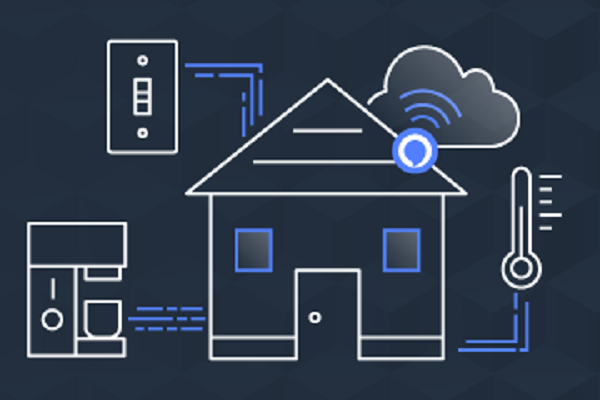A New Low-Power Alexa Can Add Voice to Any Device

Amazon has created a new variant of Alexa that uses a tiny fraction of the power and memory of the standard voice assistant. The reduced needs make it possible to build the voice assistant into a variety of simple devices like lightbulbs and toys, encouraging developers to integrate Alexa into even more products.
Low-Cost Widespread
Alexa generally requires more than 100MB of memory, a processor capable of running the voice assistant, and enough power to keep the whole system operating. The AVS Integration for AWS IoT Core, as the new system is called, changes the equation by moving the processing burden from the device to the cloud. All it needs to do is be able to recognize the wake word and connect with the remote servers. The result requires less than 1MB of memory and a similarly dumbed down processor to operate.
“With this reduction in production cost, customers can now cost-effectively build new categories of differentiated voice-enabled products such as light switches, thermostats, and small appliances,” Amazon explained in a blog post about the new system. “This allows consumers to talk directly to Alexa in new parts of their home, office, or hotel rooms for a truly ambient experience.”
Spreading Alexa into more parts of people’s homes fits right into Amazon’s ongoing efforts to dominate the smart home space. Amazon wants people to sync their Alexa-powered devices into an omnipresent voice assistant at home and beyond. The integration with AWS also serves to potentially increase the number of developers who use the cloud service as they will need it to operate their Alexa skills on these minimalist devices.
Low-Power Popularity
Reducing the power needs of voice assistant-enabled devices is an ongoing project for Amazon and other developers. A system designed to just recognize the Alexa wake word before connecting to the cloud is what earned chip maker Syntiant its certification from Amazon. Low-power consumption was also the motivator behind Knowles’ Amazon-approved Alexa headset developer kit. There’s also the Aspinity’s RAMP platform, which offers an analog process that can analyze sound before digitization. The decreased energy and processing power cost of doing so extends how long a battery charge lasts. It also speeds up reaction time for the voice assistant. Notably, the AWS integration system was built in partnership with NXP, a chipmaker who partnered to build a low-power voice platform with Snips before Snips was acquired by Sonos this month.
Power consumption is a crucial consideration for operations on the edge. IoT devices need to last a while to be useful. The new version of Alexa could help define how developers think about integrating voice into their creations for a long time to come.
Follow @voicebotai Follow @erichschwartz
First Amazon-Approved Alexa Headset Dev Kit Debuts from Knowles








